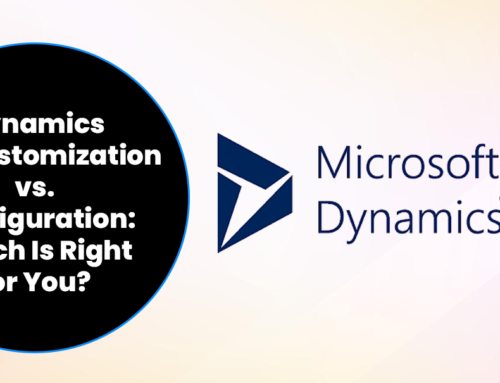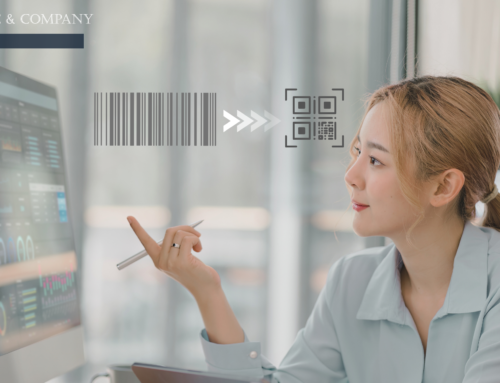
The 12-digit barcodes are soon going to be replaced by QR codes. The deadline is set for 2027 by GS1 Sunrise, a global not-for-profit organization best known for overseeing barcode standards to enable organizations to easily capture, share, and identify information.
This year marks the 50th anniversary of traditional 1D barcodes. However, more consumers and regulators are pushing for more product information, such as ingredients, nutrition facts, safety instructions, certifications, recycling, and more, driving the consumer goods industry to switch to QR codes or GS1 Data Matrix using GS1 standards.
The shift is also meant to enhance product traceability across the supply chain to prevent risks and for brands to push the customer experience envelope. The barcode-to-QR code movement will impact retail and manufacturing companies. The transition will likely require technological and skill upgrades to stay adaptable and competitive. Read the rest of this blog on facts and estimations about GS1 Sunrise 2027.
Cox-Little & Company has been an enterprise IT staffing leader since 1985. By sourcing highly qualified resources, we empower enterprises to embrace industry transformations. Explore staffing and consulting solutions to avoid the ongoing talent shortage and augment your internal teams.
All About GS1 Sunrise 2027 Initiative
Barcodes debuted in the 1970s, and IBM’s engineer reinvented the technology to implement it at retail point-of-sale (POS), eventually spawning the GS1 global standard. The EAN/UPC barcodes helped track inventory and product information across industries for five decades. In 1994, Denso, a subsidiary of Toyota, came up with two-dimensional, geometric pattern-based quick response (QR) codes that could hold 4,000+ alphanumeric characters compared to 1D barcodes.
Since the COVID-19 pandemic, the use of QR codes has boomed due to digitization. It has become the de facto payment modality across several countries, including Brazil, Indonesia, China, Singapore, and India. The widespread prominence of QR codes spurred Project Sunrise 2027, which replaced barcodes with QR codes.
Nearly 26 of the largest retailers and consumer products manufacturing brands jointly announced their support for the GS1 Management Board’s transition of QR codes to GS1 standards. The companies include giant corporations like Coca-Cola, L’Oreal, Nestle P&G, Mondelēz International, Dr Oetker, and Alibaba.
The Sunrise 2027 project aims to standardize the approach for QR code adoption while requiring changes from retailers and manufacturing companies so that they can seamlessly adopt the norm and unlock value in the long run.
According to the data by GS1, almost 48 countries representing 88% of the world’s GDP are in the pilot phase of the Sunrise 2027 project. Additionally, it also provides comprehensive guidance on actions and best practices for supporting the transition retailers and manufacturers, such as:
Retailers: Retail companies must equip their POS systems with traditional barcodes and QR codes and ensure they have the necessary software and hardware scanners to read 2D barcodes.
Manufacturers: They must choose the relevant data carriers to support QR codes that rely on internet-powered mobile devices or GS1 DataMatrix. They must also figure out how to understand the exact volume and type of data to embed in the barcode, like the index, serial numbers, product expiration dates, batch numbers, etc. They must also plan the technological and process upgrades needed for the successful barcode-to-QR code transition.
QR Code Benefits for Retail and Manufacturing Companies

According to Statista research forecasts, there are about 97.8 million QR code scanners, which will likely increase to 100.2 million by next year. Thanks to the retail and consumer products giants who have been testing out QR codes instead of vertical line-based barcodes, we have some insights about their tangible benefits, such as:
- Inventory and Supply Chain Traceability: Manufacturers and retail firms can track their merchandise and products across the supply chain while monitoring critical data to vet product quality, authenticity, ingredient or raw material sourcing, and safety.
- Improved Product Safety: Consumer products companies and manufacturers can uphold brand integrity by tracking products or materials beyond their expiration dates or quality level information. It helps execute batch recalls or quality assessments before reaching the customers or wholesalers.
- Better Inventory Management: Inventory accuracy is essential to curbing wastage and planning product dispatch to maintain freshness and quality levels, availability, and location insights through QR codes.
- Smart Packaging: Brands can go the extra mile by leveraging QR codes on packaging to engage with customers through discounts, questionnaires, and forms. QR codes in packaging also help adhere to product labeling and safety compliance, which requires sharing product safety, ingredients, nutrition, and recycling information.
- High Customer Engagement & Experience: A survey by GS1 found that 62% of consumers are willing to spend more on a product that provides them with detailed information. 77% of them believe that product information influences their purchase decisions. QR codes help customers access brand-authorized details about products and promotions. 2D QR codes are a cost-effective and space-efficient solution to redefine brand-customer interactions.
- Sustainable Manufacturing & Product Recycling: QR codes house data relevant to the end customers by providing expiration dates. They also help manufacturers and others across the value chain keep track of wastages based on materials’ shelf life. QR codes also help provide repair information and disposal and recycling methods for the final customers to enable a circular economy.
That was enough context to get started on QR codes. If you are wondering about the changes they may warrant across manufacturers’ data and IT systems to maximize value from QR codes, watch this space for more updates!
Are you looking to replenish your teams with certified ERP professionals? Do you need expert insights on optimizing your legacy IT systems?
Contact our team to discuss your staffing needs.





